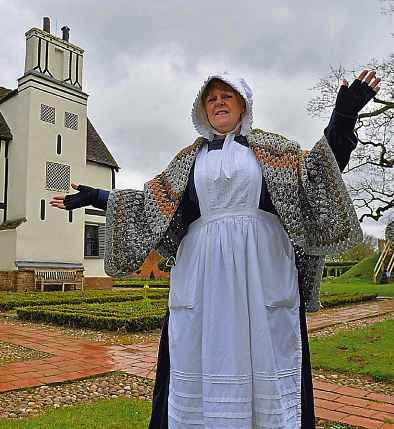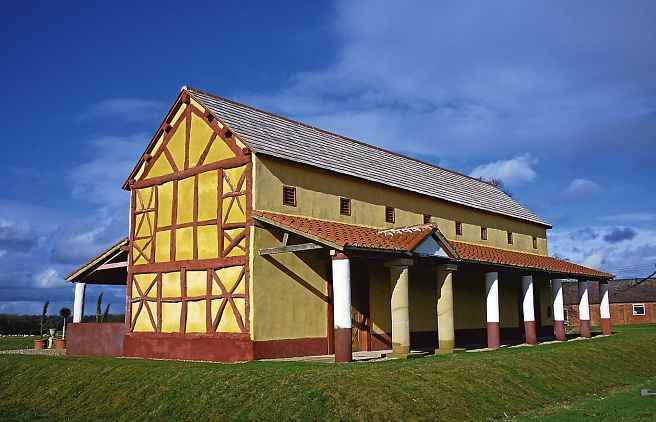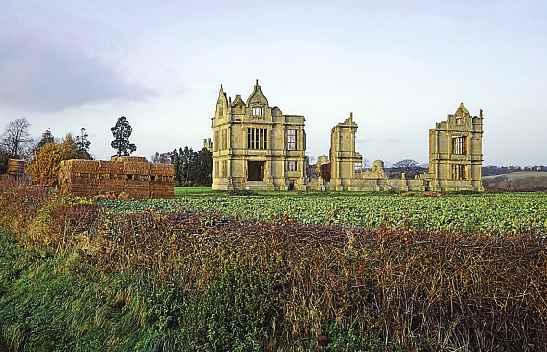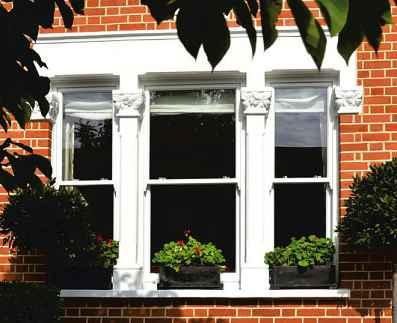
4 minute read
OAK’S ROLE IN ROYAL HISTORY
AS THE POMP AND CIRCUMSTANCE OF THE KING’S CORONATION MARKS THE MONTH, DAN MORRIS LOOKS AT THE REGION’S FAMOUS PART IN THE STORY OF OUR LAST MONARCH WHOSE NAME WASCHARLES

Situated at Bishop’s Wood, Boscobel Houseisa picturesque hunting lodge and former farm site that is today run by English Heritage.
The quaint property is one of the jewels in the charity’s Shropshire crown, offering visitors awindow into several centuries’ worth of the county’spast. Yet, it is known best for its role in the dramatic tale of Stuartruler King Charles II,who wrote the site intothe history books in the 17th century while hiding in fear for his life.

Following his 1651 defeat at Third English Civil Warengagement, theBattle of Worcester,Charles and his supporters fled and sought refuge with Catholic and Royalist sympathisers in the Midlands, desperate to avoid the enemy English Commonwealth troops who were hunting them.
“They knew that this part of the region had alot of well-to-do important Catholic families and so this is where they headed,” said English Heritage curatorCameron Moffett. “Charles and his party were trooping around this bit of the countryside, avoiding pursuit from the Commonwealth soldiers. They took refuge at nearby White Ladies Priory,and aday later headed over to Boscobel.”
It was on this day thatanepisode occurred that was destined to go into legend, and also birth one of themost popular public house monikers ever to grace our land.
“When they got to Boscobel there were enemy troops hanging around and Charles and one of his officers,William Careless, climbed up into an oak tree,” said Cameron. “The tree had grown to be very leafy,and as suchwas very easy for them to hide in. They hid there for an entire dayand troops were literally going back and forth on the ground underneath this tree looking for them. Theyspent the day there and in the evening they came down and spent the night at Boscobel.”
The ‘Royal Oak’, as it has become known, became famous, with Charles himself eventually spreading the story of his fabled hiding place with great enthusiasm.
“The tree obviously has been aterrific focusfor people interested in the story,” said Cameron. “Once Charles was –20 years on –properlycrowned King, he was encouraging people to tell exciting stories about this episode in his life. And this one spread so well that, almostimmediately, people started going to see the‘famous tree’.”
However,as Cameron relates, said visitors wanted asouvenir
“People went and they took branches and they cut bark and unfortunately the original tree did not last very long,” she
FROM TOP: added. “Everybody just wanted abit of it to take away.The passion of the public for the story sadly brought about its end people loved it too much!”
Adescendant of the original Royal Oak is, however,well-preserved at Boscobel, and is one of the many attractions modern visitors to thesite are able to enjoy.Indeed, todayBoscobel House offers afull and rounded day out made all the richer by English Heritage’s work at the site in recenttimes.


“We finished areinterpretation project at Boscobel about two years ago,” said Cameron. “In this redisplay we have brought anew focus to the outside parts of the site –including afocus on its farming background, which wasn’t really touched on previously.Inthe past, things were very much focused exclusively on Charles and the tree, but now there’salot more at the site relating to itslater history asa Victorian agricultural establishment. Of course we’re still very proudofthe history with Charles, and we’verebuilt ahut thatsits on amound that’s a rebuilding of aplace where Charles lurked and read while he was lying low
“Asbefore,visitors can see the dressed interior of the house and the spaces where we know that Charles was. Youcan see the priest hole where he hid overnight–particularly amazing because, at 6ft 3in, he was avery tall man for the time, and he must’ve been very uncomfortable there!



“Wehave also planted alot of young oak trees with the intention that over decades, the field where the descendant of the original treeiswill eventually start to look as it did when Charles was hiding there.”
Indeed, similar horticulturalwork is at the centre of anational English Heritage project in honourof the newKing’s reign. To celebrate the coronation of His Majesty Charles III, thecharity is setting out to create one hundred wild meadows across its sites.

At locations such as Stonehenge and the Jewel Tower in Westminster (as well as Shropshire sites including Boscobel, Wroxeter Roman City,Wenlock Priory and Morton Corbet Castle), English Heritage will, over the next decade, be endeavouring to restore flower-rich grasslands that have been lost, and enhance those that already exist.

Since the 1930s and the advent of post-war modern farming practices, the UK has reportedly lost 97 per cent of its meadows. Prior to this, much of England’s grassland would have been home to much more diverse flora than it is today.Whilstthe English Heritage estate is relatively unusual in not having been subject to changingagricultural policy,asthe charity tells it, thegrassland surrounding its historic monuments has become ‘municipalised’ over the past century,diminishing the botanical diversity enjoyed by earlier generations.
Kate Mavor,English Heritage’s chief executive, said: “The King’s coronation is asignificant moment in history and we wanted to mark it in ameaningful way,inaway that combines twoofHis Majesty’s passions –nature and heritage. We’re creating more natural spaces at the heart of our historic properties, ensuring that wildflowers and wildlife can flourish there once again, and helping our visitors to step back into history and experience something with which the sites’ historic occupants would have been familiar.”
Committed as ever to helping people to ‘step into England’s story’,English Heritage also hope this initiative will encourage them to become apart of it.

“In adecade’s time, our coronation pledge will be an inspiring legacy of established, restored and new meadows at 100 of our historic sitesright across England,” Kate added. “Wehope that it will encourage local communities to get involved and help transform their local heritage sites into flower-rich meadows.”
English Heritage is partnering with Plantlife –Europe’s largest charity dedicated to saving wild plants and fungi –onthe project. Plantlife will support English Heritage by providing resources and expertise, skills development training and knowledge exchange opportunitiesas the initiative progresses.
Plantlife’s chief executive, Ian Dunn, said: “Plantlife is delighted to be working with EnglishHeritage on meadow creation. This new and exciting partnership offers alifelinetoahundred key grassland sites and their associated wildlife, and focuses on achapter of English natural history lost and all but forgotten. Together,welook forward to a future where England’s best historic sites boast thehighest quality grasslands.” n Formore information, visitwww english-heritage.org.uk
He may not be hiding in atree, but already,and happily,the mark of the new King Charles on heritagesites like Boscobel seems assured.


















